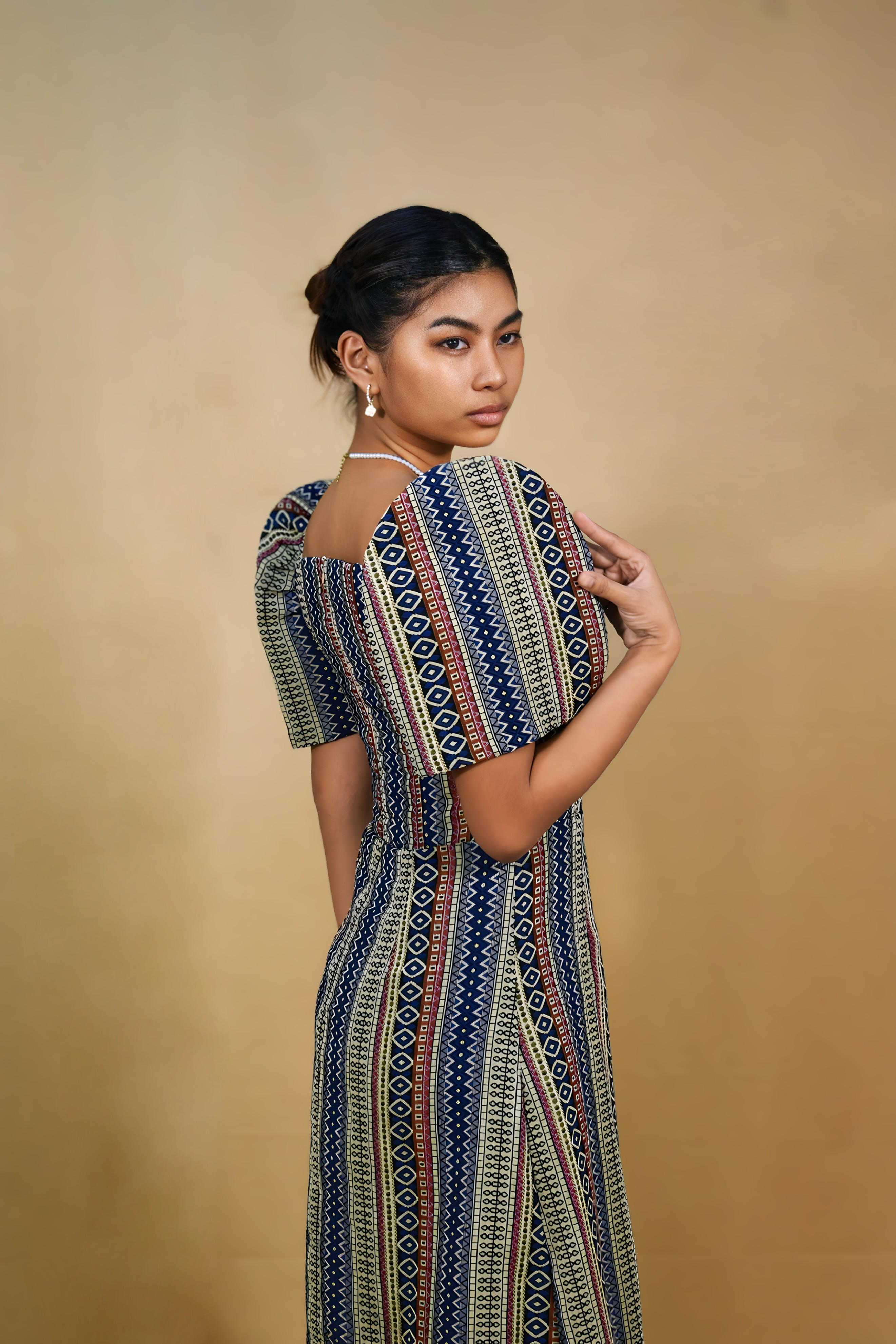Understanding the Different Parts of the Filipiniana Ensemble: A Modern Guide
The Filipiniana ensemble is a picturesque expression of Filipino culture and sophistication. As with all couture garments, women used to wear this attire under the hostile and rich social scenarios of women’s spaces and formality. Today, designers like Camisa Filipina are modernizing this look for the new-age Filipina by combining ageless features and styles with modern touches.
There’s no denying the beauty of the Filipiniana Ensemble and that lies in its structure. Everything, in one way or another arbitrarily adds to the beauty, has depth and significance attached to it whether its historical, cultural, aesthetic meaning. Knowing what goes into crafting this Filipiniana garment allows us to see the value not only in the work that has gone into it but the true story that lies in each strand.
Now, let me explain in more detail the primary components of the Filipino attire the Filipiniana and their uses, what they stand for, and their changes throughout years:
1. Baro (Blouse)
The "camisa," or "baro," as it is also known, makes up the top garment of the traditional outfit. Baros are made with soft and sheer materials like piña (pineapple fiber), jusi (banana silk fiber) and organza. Its wide bell-shaped sleeves usually features nature-inspired floral and vine hand embroidery. It’s as if a baro is a canvas showcasing a skilled artisans captivating creations.
Sewing a baro has always been tailored to highlights a woman's elegance and social hierarchy. Jusi's translucent quality offered a glimpse of the inner camisa, merging the concept of an undershirt with an amusingly suggestive overlay - a blend of reserve and eroticism. In contemporary style, however, these dresses have undergone major shifts with barbaric elegance! In contemporary fashion, the baro is designed with linings for comfort, tailored structuring, and versatility for both casual and formal appearances. Modern innovations bringing zippers, built-in support structures, and duchess satin make some iterations truly extravagant.
2. Saya (Skirt)
Saya is a long skirt that complements the baro. During the saya colonial period, it was customary to wear the saya duringg the span of a day, and Western culture influenced tailors to create a dome like structure with the help of a petticoat known as the ”saya de cola.” It is apparent that the breadth and length distinguish formality and prominence.
The saya is still a beauty today but has become easiler to wear. Embraced by modern designers, the saya now comes in different cuts and fabrics such as a domed maxi or a simple, one-layered ankle-length skirt made from a lighter material. Many modern sayas are still embroidered with patterns, but some have opted for solid, muted hues which make them more is adaptable, contemporary. The saya's evolution has enabled the Filipiniana to transition from traditional ceremonies to business settings and even formal evening functions.
3. Alampay
The alampay is a piece of clothing with the shape of a shawl or wrap which is worn draped over one shoulder and crossing the chest. In pre-colonial times, women used the alampay to cover themselves and as a sign of modesty. It also served as a spohisticated accessory that complemented the baro’t saya outfit.
The alampay is today one of the most emphasized part of the Filipiniana. A person may choose to style in different ways; it can be draped, tied or pinned with ease. For example, Camisa Filipina has alampay pieces in lace, silk and couture embroidered fabrics which can make even the most basic attire stand out. Today, the modern alampay is a pioneer of both the traditional and contemporary style, blending both worlds seamlessly.
4. Panuelo
The panuelo is a more embroidered version of alampay. The alampay is poured more like a style of shawl while the pangulo features a more structured triangular shape and its worn symmetrically over the decollete and pinned. Additionally, an alampay is voluminous while a panuelo is stiffer.
Today's creative designs allow softer panuelo sashes which are easily attached to blouses for younger users to wear without further alterations. This is not only for forming an elegant and stylish look but also serves for convenience. In modern designs of formal panuelo adorned terno sets, the panuelo gets attached for ease while retaining its beauty and sophistication.
5. Tapis
Tapis is a piece of cloth, rectangular or semi oval in shape, worn over the saya and tied around the waist. As part of women’s attire in the pre colonial Philippines, it was considered ‘everyday wear’. Over the years, it has evolved to become more decorative in style, especially during the colonial period where it was often made of embroidered or brocaded fabric.
In sleek, corporate or minimalistic interpretations of the Filipiniana, modern adaptations of the dress have omitted the tapis for a more streamlined silhouette. In traditional presentations however, the tapis is integral to the outfit as it pays homage to Filipino styles from the indigenous and early colonial period. Some designers reinterpret the tapis to look like layered panels, wrapped skirts, or other forms that mimic the outline of the tapis.
6. Accessories
Traditional accessories are equally importance as the outfit itself, and no Filipiniana look can be complete without it. These accessories are:
- Payneta - Ornamental hair combs which are richly decorated and are frequently created of carved wood, metal, or tortoise shell.
- Exquisite jewelry - Necklaces and earrings that are crafted with superb filigree work or sometimes passed down through generations.
- Brooches and pins – these serve dual purposes as statement accessories together with fastening the alampay or panuelo.
- Pearl and gold jewelry – are seen as emblems of refinement and supremacy.
Today’s newly refined culture of modern are fashionista’s incorporates additional elements within accessories, mixing traditional pieces with simple modern earrings, clutch bags, sneakers, creating innovative outfits for the culture focused.
Bridging Past and Present
Each article of the Filipiniana clothing tells a story, merging Filipino culture and history which is further enhanced through the clothing’s intricately embroidered accessories and costumes. Wearing the Filipiniana is not just about fashion, it is about embracing pride and identity while honoring those who wore it long before us.
At Camisa Filipina, we bridge the past with present by crafting pieces that accentuate this history. Each modern but traditional piece is distinctively made for strong Filipinas who are faithful to their roots and culture.
Understanding the components of a Filipiniana dresses outfit allows you to wear it purposefully, whether you wish to showcase grace at a cultural occasion, gala event, or want to enliven your daily wardrobe.
Because to wear Filipiniana is to carry history with elegance.






